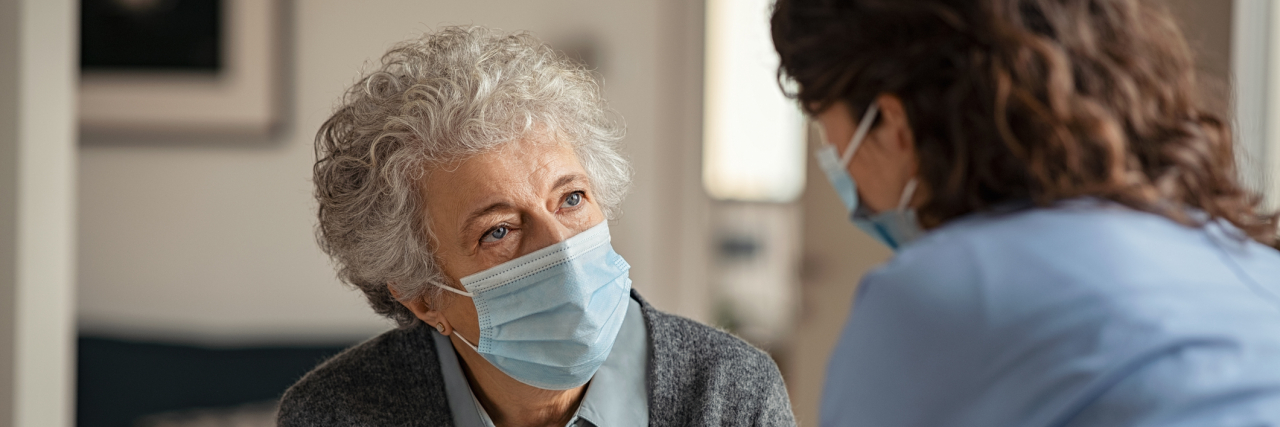There’s no doubt about it: the COVID-19 pandemic has shaken things up when it comes to managing chronic conditions, including chronic myeloid leukemia (CML), a type of cancer that starts in the blood-forming cells of the bone marrow and invades the blood. About 15% of leukemias in adults are CML, according to the American Cancer Society. Even as it becomes safer to enter hospitals and doctor’s offices in person, there’s still a level of anxiety about seeing others in the waiting room.
Nikki Yuill of The Leukemia and Lymphoma Society, spoke with Dr. Ehab Atallah, MD, from the Medical College of Wisconsin, about the unique challenges that the pandemic has caused for people living with cancer, particularly CML. Dr. Atallah says that cancer treatment has always remained a priority no matter what; doctors have simply adapted to the limited access to people in person. “According to the American Society of Hematology, and experts at the International CML Foundation, there have not been any significant changes to the recommended treatment for newly diagnosed patients with CML or those currently receiving care. Many health care practices have adapted to the circumstances with safety measures to protect patients with CML.” Most doctor offices have pivoted to virtual and televisit appointments, as well as emailing and texting with people living with CML. In-person visits have also been shortened to minimize exposure (where possible), and labs have worked to space out those seeking things like blood work to avoid extra people waiting in the same room.
Many people have adapted to the new normal and we could see some of these changes in the format and length of doctor visits becoming the norm even after the pandemic; however, this could hurt patients who are in need of more hands-on care: people whose current treatment plan stops working or is causing them unbearable side effects, or those still seeking something that will stick and make a positive impact on their health.
There have been many advancements in the last 20 years in CML treatment and management, according to Dr. Atallah, which also means more options than ever. That, combined with the unique protocols around COVID-19, makes it even more paramount for both you and your doctor to make the most of appointment conversations. This is where proactivity plays an even bigger role.
- Be fully open with your doctor about life with CML
“The more we know about the day-to-day experiences of patients with CML, the better care we can offer. Patients should feel comfortable bringing up challenges and asking questions,” says Dr. Atallah.
- Reflect on your current treatment – is it still meeting your needs in terms of your response and the tolerability of side effects?
- Talk to loved ones that you live with or see frequently to see if they’ve noticed any changes in your health status.
- Prepare for meetings with your doctor or care team, and bring notes about your feelings and response to treatment, as well as how frequently any symptoms impact your daily life.
- Ask questions and start a dialogue with your care team if you aren’t happy with your response to side effects and/or wish to explore other options.
- And when talking to your doctor, remember that you’re never complaining when talking about symptoms, however small they may seem to you! That side effect could be the key in making a positive change to your overall treatment plan.
- Track your experience with CML and your treatment
Nikki from The Leukemia and Lymphoma Society says that her organization talks to people living with CML about the importance of “staying in the chronic phase,” meaning that CML isn’t advancing to a more severe phase. One way to recognize any potential red flags when it comes to CML advancement is for people to familiarize themselves with what to expect and watch for. One method she suggests is journaling regularly because “it is a great way to capture data of your day-to-day experience that helps to have an informed conversation.” Tools like the LLS Health Manager or BELONG app can help people hold themselves accountable to this practice, as well as connect them with like-minded people who are going through a similar situation. The Mighty app is also a great community forum to find others living with any type of cancer.
- Prepare for your visit
Once you have identified the areas of concern or topics that you’d like to discuss with your doctor, prepare for your visit by writing down your list of questions or updates and share them with your care team as an “agenda” as soon as your visit starts. In a context where time is ever more precious, this will help you and your providers use the time together to address your most pressing needs.
All of these suggestions are key in helping your doctor help you find the best treatment for CML, your lifestyle, and your needs. The more aware and proactive you are about how CML impacts your life, plus the more open you are with your care team, the greater the chance that your doctor can help you find and stay on a care plan that better fits your health and well-being.
To learn more about CML and find additional resources, please visit WhatAboutMyCML.com.
12/21 171562


